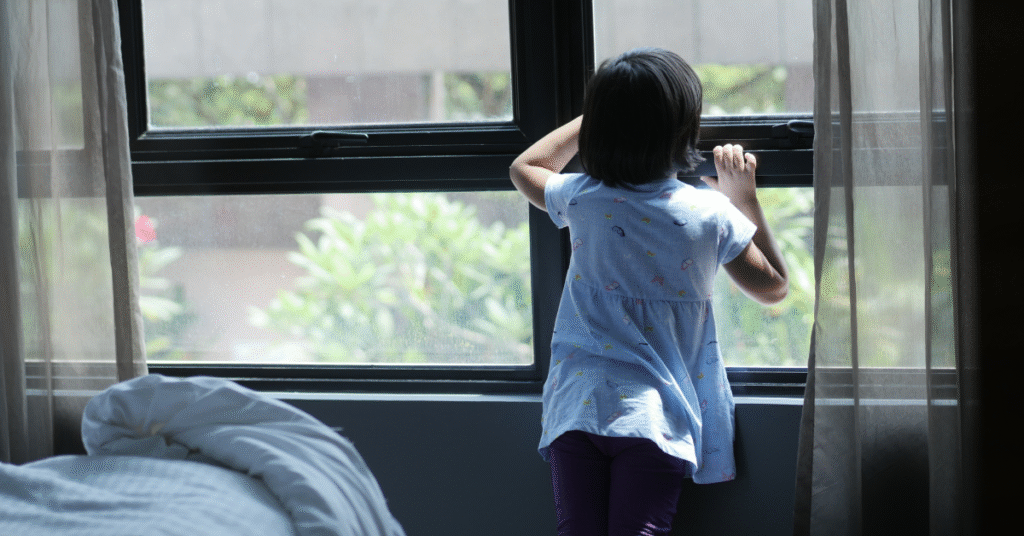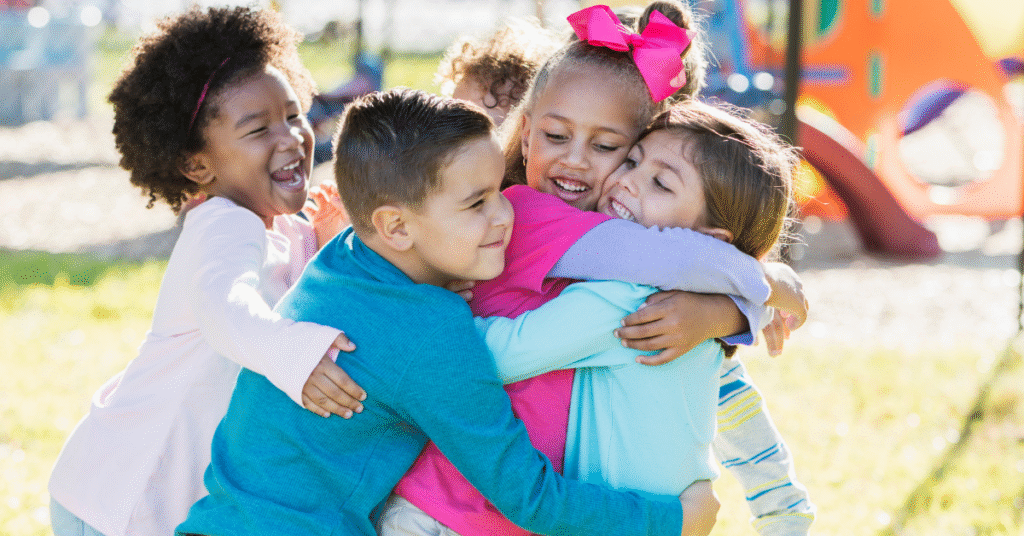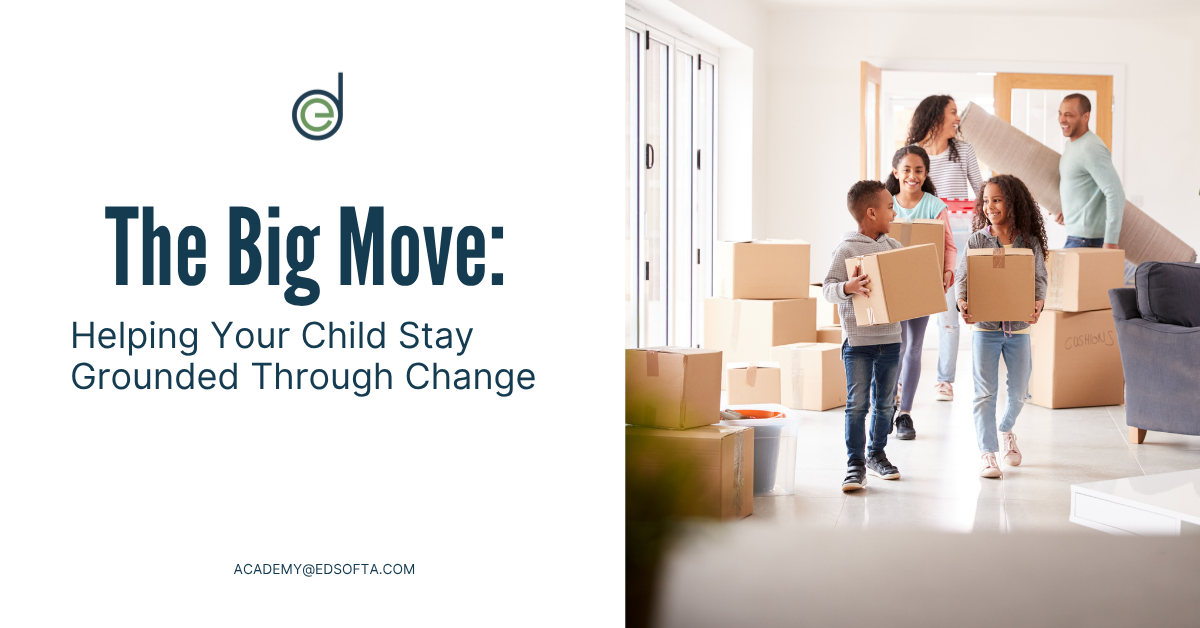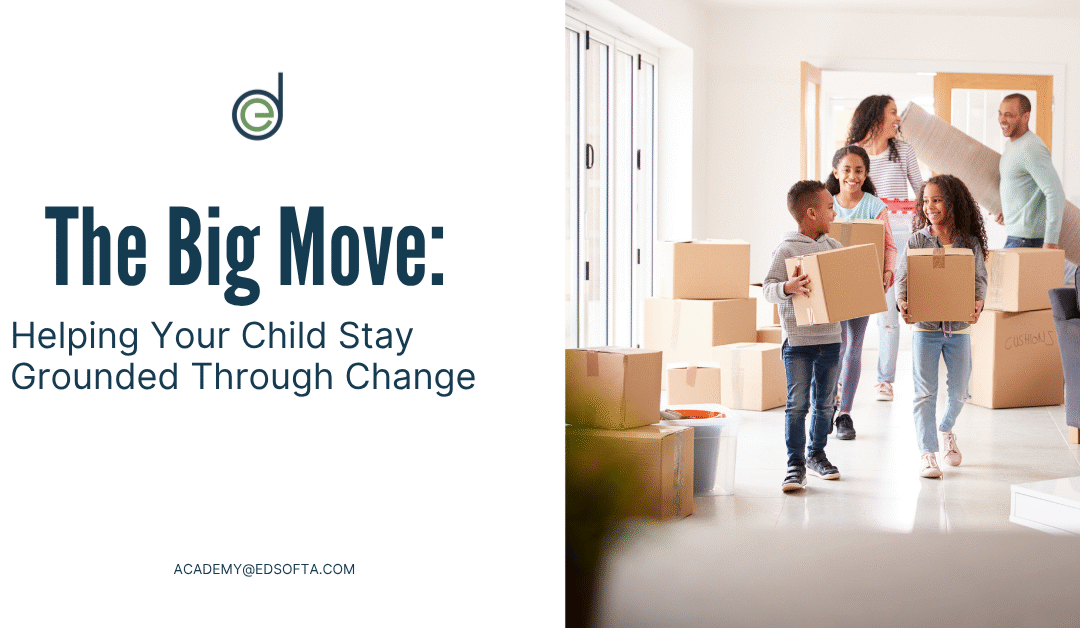When Everything Changes — Through a Child’s Eyes
The Big Move is about shifting a child’s entire sense of “home”, not just about changing addresses or new classrooms. Imagine your child saying goodbye to their old bedroom, familiar streets, and classmates they’ve known for years. For many parents, moving means opportunity. But for kids, it can feel like stepping into the unknown.
Seven-year-old Zoe once loved school, but after her family moved to a new city, she became quieter. Her teacher noticed she no longer raised her hand in class. At night, she’d whisper to her mum, “What if no one likes me here?”
That’s the heart of The Big Move, the emotional transition that happens beneath the surface. It’s not just about unpacking boxes; it’s about helping your child rebuild belonging, confidence, and comfort in a new space.
How Kids Really Experience Change

Research shows that moving homes or changing schools can disrupt a child’s sense of belonging and trigger stress or anxiety.
Why? Because children thrive on familiar routines and predictable environments, the things that tell them, “I’m safe here.”
While adults may focus on the practical side, setting up the house, adjusting to a new job, and finding schools, children are adjusting emotionally. They’re learning new names, decoding new rules, and figuring out how they fit into unfamiliar social circles.
For example, a 10-year-old who once felt confident might suddenly become shy or hesitant to join playground games. This is completely normal. They’re trying to find their footing again.
Spotting the Emotional Impact
Sometimes the signs are quiet, subtle changes that build up over time. You might notice your child:
- Withdrawing or becoming shy in new settings
- Showing mood swings or sudden clinginess
- Struggling with sleep or concentration at school
- Losing interest in favourite activities
Psychologists call this “environmental transition stress.” It’s a natural reaction to a new setting that feels unpredictable or overwhelming.
But here’s the good news: with the right support, children recover and often emerge more adaptable and resilient. Like a plant repotted into new soil, your child needs time and care to thrive again.
Step One: Keep Familiar Routines

One of the most powerful things you can do after The Big Move is to keep small, familiar routines alive. These tiny rituals give your child a sense of stability even when everything else feels different.
Think about it, bedtime stories, Saturday pancakes, prayer times, or evening walks. These are anchors that tell your child, “Some things will always stay the same.”
If you moved to a new time zone or your schedule shifted, try to preserve at least one daily family ritual. Maybe bedtime is earlier, but story time still happens. These small constants give kids comfort and confidence to handle change.
Give Your Child the Best Learning Experience!
Register your kid now on EdSofta and watch them thrive in an interactive learning environment!
👉 Click Here to Register Your Kid Now!
Step Two: Encourage Social Connections
Change feels less scary when your child has friends to share it with. Encourage them to join after-school clubs, sports teams, or community activities where they can meet peers with shared interests.
If your child loves art, find a weekend class nearby. If they enjoy football, visit the local pitch and meet the coach together. These environments give your child a chance to connect, and connection builds belonging.
You can also get involved. Attend school events or volunteer in parent committees. When children see you engaging with their new environment, they learn that it’s okay to reach out too.
Step Three: Stay Connected to the Old
While it’s important to help your child settle in, don’t rush to erase the old. Staying connected to familiar faces helps them feel rooted while they build new relationships.
Set up video calls with old friends or teachers once a week. Let them send drawings, photos, or letters to former classmates. These “memory bridges” make it easier for kids to process the change without feeling like they’ve lost everything familiar.
You can even create a “Memory Box” together, fill it with photos, souvenirs, and little reminders of their previous home. It helps children see that moving forward doesn’t mean forgetting where they came from.
Step Four: Model Calm and Positivity
Children watch how their parents react to change. If you’re anxious, they’ll mirror it. But if you show calm and excitement, they’ll pick up on that energy too.
Talk openly about your own feelings. Say things like, “I miss our old house too, but I’m also excited to explore this new park together.” This teaches emotional honesty and that it’s okay to feel two things at once.
Even if your child doesn’t open up right away, knowing that you understand how big the change feels makes them feel seen and supported.
Give Your Child the Best Learning Experience!
Register your kid now on EdSofta and watch them thrive in an interactive learning environment!
👉 Click Here to Register Your Kid Now!
The Growth That Comes After the Move

Here’s something powerful: The Big Move can actually help your child grow stronger emotionally. As they navigate new environments, they learn adaptability, resilience, and social confidence, skills that last a lifetime.
A year after Zoe’s family moved, she became one of the most engaged students in her new class. When her teacher asked how she adjusted, she smiled and said, “I just kept remembering what I liked about myself.”
It’s a beautiful reminder that children can handle change, as long as they have guidance, empathy, and space to grow.
In Summary
Change is hard, but The Big Move can be a season of growth for your child when you combine empathy, structure, and connection.
Keep routines steady. Encourage friendships. Stay connected to their past. And most importantly, let them see you navigating change with hope. Because when you model resilience, your child learns to thrive through change.
Give Your Child the Best Learning Experience!
Register your kid now on EdSofta and watch them thrive in an interactive learning environment!
👉 Click Here to Register Your Kid Now!




